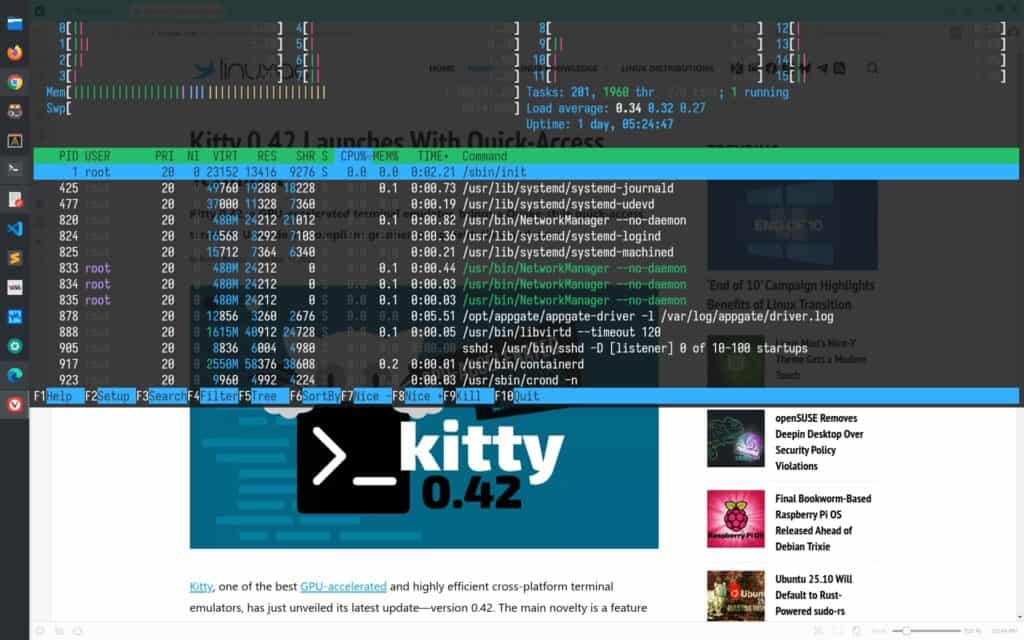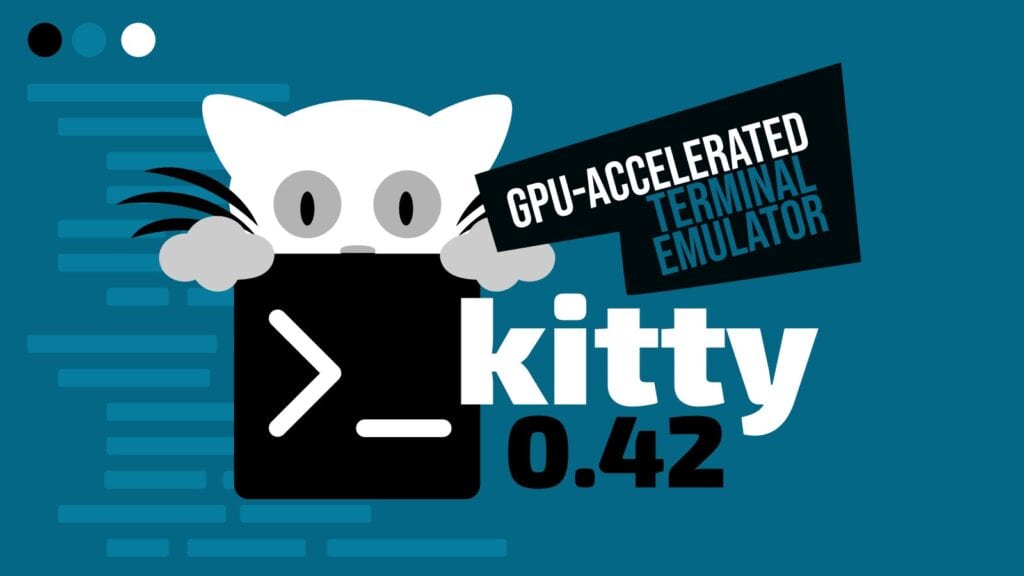Kitty, one of the best GPU-accelerated and highly efficient cross-platform terminal emulators, has just unveiled its latest update—version 0.42. The main novelty is a feature that many power users have quietly wished for: a Quake-style drop-down window that can be summoned with a single keystroke.
Labeled quick-access-terminal, the new “kitten” floats above the desktop, supports translucency, and works consistently across X11, Wayland, and even macOS. In day-to-day practice, that means a full-featured terminal is never more than a tap away.
You can customize how the quick access window looks and works by creating a “quick-access-terminal.conf” file in your Kitty config folder. Specifically, the “kitty_conf” option lets you apply different Kitty settings just for the quick access window.

At the same time, several important under-the-hood improvements have also been made. First, Kitty now performs full grapheme-cluster segmentation in line with the Unicode 16 specification, ensuring complex emoji and scripts render correctly when the terminal splits text into cells.
Color theming also sees a subtle but welcome tweak. Automatic light-and-dark switching now extends to background images, keeping wallpapers in sync with the active palette.
Moreover, the popular panel kitten gains the ability to spawn several panels inside one process via kitty +kitten panel --single-instance, cutting overhead when users tile multiple terminals on the same desktop.
Launching and managing windows grows more flexible, too. Administrators can start Kitty in a hidden state (--start-as=hidden) for scripts that reveal the interface only when needed. The remote-control API picks up new options as well: it can wait for child processes to exit, modify desktop panels on the fly, and even toggle visibility of OS-level windows.
On the input side, mouse_hide_wait becomes configurable, letting users fine-tune how quickly the cursor reappears after keystrokes. The diff kitten borrows vim-style half-page and full-page scrolling and now accepts named pipes.
There is also a font size helper (change_font_size) that finally supports multiplying or dividing the current size, rather than nudging it only one point at a time.
Lastly, platform-specific polish rounds out the release. Wayland compositors that expose the xdg-system-bell protocol can trigger the system bell directly. On macOS, visual window selection once again respects the active color theme.
Plus, a collection of long-standing regressions—ranging from command-line parsing quirks introduced in 0.36.0 to automatic theme re-application—has been stamped out along the way.
For more information, see the changelog.
